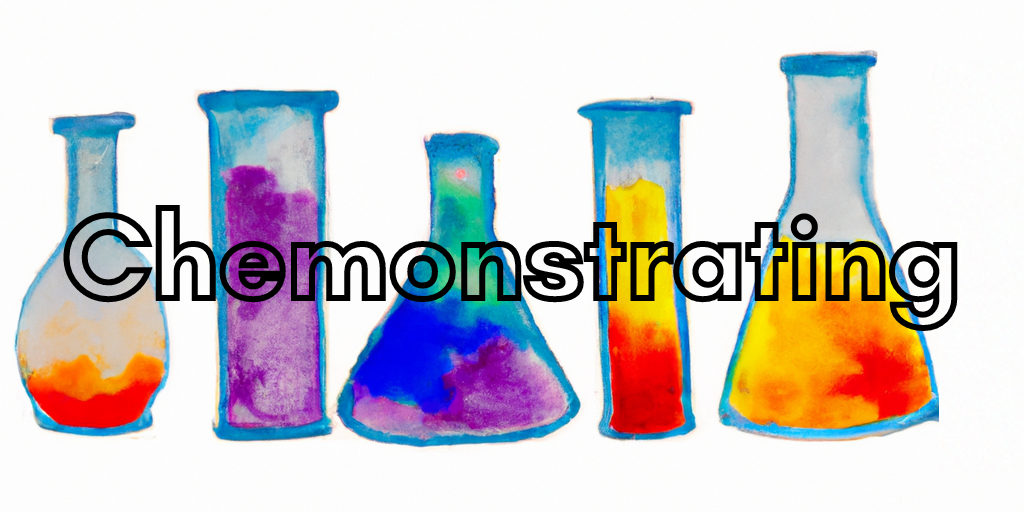Oscillating Clock Reaction
Alternate titles:
Belousov-Zhabotinsky Reaction
Purpose:
To demonstrate the classic Belousov-Zhabotinsky Reaction illustrating an oscillating reaction mechanism.
Materials:
- 3 500mL Erlenmeyer flasks
- Stir bar
- Stir plate
- 2L beaker
Reagents:
- Cerium (IV) ammonium nitrate ((NH4)2[Ce(NO3)6])
- Malonic acid (CH2(COOH)2)
- Potassium bromate (KBrO3)
- Potassium bromide (KBr)
- 0.1% Ferroin indicator
Hazards and PPE:
- Ferroin is an eye and skin irritant.
- Cerium (IV) ammonium nitrate is an oxidizer, corrosive to metals, causes severe burns, and an acute toxin. Store and handle with care.
- Potassium bromate is a strong oxidizer, acute toxin, and suspected carcinogen. Store and handle with care.
- Potassium bromide is a serious skin, eye, and respiratory irritant, and an aquatic hazard. Dispose of and handle with care.
- Wear approved safety goggles and gloves.
Protocol:
Preparation
- Solution A
- In a 500mL Erlenmeyer flask, dissolve 19g KBrO3 in 500mL DI H2. This solution is 0.23M.
- Solution B
- In a 500mL Erlenmeyer flask, dissolve 16g malonic acid and 3.5g of KBr in 500mL DI H2. This solution is 0.31M malonic acid and 0.059M KBr.
- Solution C
- In a 500mL Erlenmeyer flask, dissolve 5.3g (NH4)2[Ce(NO3)6] in 500mL 2.7M H2SO4. This solution is 0.019M.
- Place magnetic stir bar in 2L beaker.
- Place 2L beaker on stir plate.
Demonstration
- Pour Solution A and Solution B into beaker and adjust stirrer to produce a vortex in the solution.
- Pour Solution C into beaker followed by 30-35mL ferroin. Solution will become amber.
- After about one minute, the color of the solution will change from amber to yellow, then green, and finally red. The color will return to amber and repeat itself many times (20+).
Additional Notes:
- A version of this demo is also possible where smaller portions of reagents are used to perform the demo in a petri dish for a smaller audience or for video, with different visual impact as seen in NileRed's video below.
Disposal:
- Solutions should be placed in properly labeled waste container.
Reactions:
- The overall reaction occurring in this demonstration is the cerium-catalyzed oxidation of malonic acid by bromate ions in diluted sulfuric acid. The bromate ions are reduced to bromide ions, while the malonic acid is oxidized to carbon dioxide and water. The reaction can be represented by the equation: 3CH2(CO2H)2 + 4BrO3− → 4Br- + 9CO2 + 6H2O.
- The reaction mechanism involves two different processes. Process A involves ions, and the steps are two-electron transfers. Process B involves radicals and one-electron transfers. Which process is dominant at a particular time is determined by the bromide ion concentration. Process A occurs when the bromide ion concentration rises above a certain critical level, while Process B dominates when the bromide ion concentration falls below a certain level. Oscillations occur because Process A consumes bromide ions and thus leads to the conditions which favor Process B. Process B liberates bromide ions, which return the reaction to control by Process A.
Citations:
- Shakharshiri, Bassam; Chemical Demonstrations, Volume II, 1985.
Videos:
